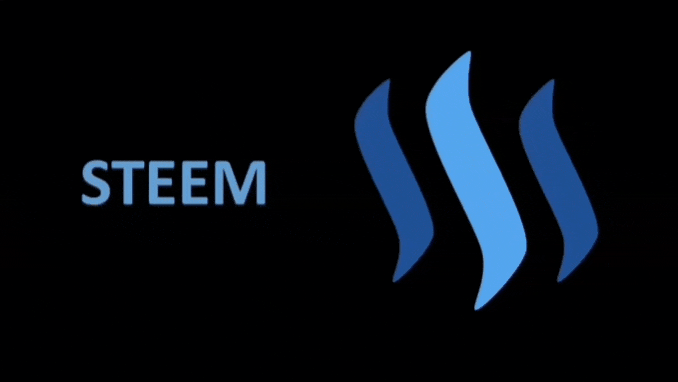Hi Everyone,
Note: This post makes comparisons between the proposed 2e12 reward curve and several other curve types in the absence of any changes in rewards caused by the other two elements of the Economic Improvement Proposal (i.e. Increased curation rewards and downvote mana pool) and the Steem Proposal System (SPS).
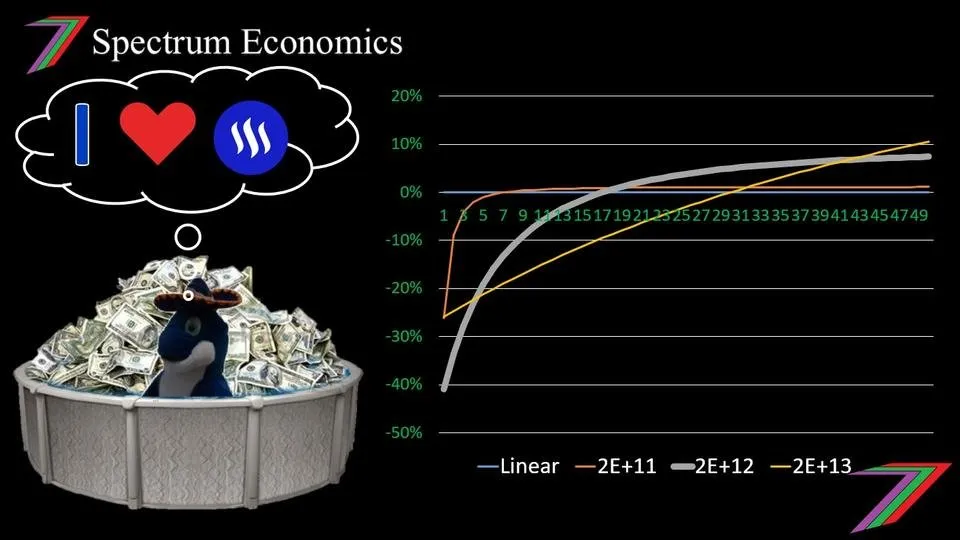
My greatest concern regarding the Economic Improvement Proposal (EIP) is the proposed rewards curve. In my post, ’Steem Rewards Curve - Bend or not to bend?’, I wrote about the rewards curve. In that post, I made comparisons between various types of rewards curves as well as made a general comparison between linear and non-linear curves.
Since my previous post, @andrarchy (Steemit Team member) confirmed the formula that Steemit Inc. are proposing for Hardfork 21 in the comment section of the post HF21: SPS and EIP Explained’ with his response to @miniature-tiger. Prior to that post, Steemit Inc. also graphically compared the proposed reward curve with a linear rewards curve in their post ‘Steemit Update: HF21 Testnet, SPS, EIP, Rewards API, SMTs!’. The post with the graphically comparison did not contain a formula. The graph and description under the graph gave me the impression that the rewards would revert to linear once the value of the post reached approximately 16 Steem. I believed posts that received less than 16 Steem would be worse off and posts that received more than 16 Steem would be very slightly better off. My immediate reaction was that a Sigmoid type formula such as N/(1+EXP^(-N×C)) was being proposed (this type of formula reverts to linear at a particular point defined by the ‘C’ parameter). I was concerned that such a formula would encourage people to buy votes to get onto the linear portion of the rewards curve. Now that I have seen the actual proposed formula, I think this is less likely to be the case.
Proposed EIP formula
The proposed rewards curve formula is as follows:
((N+S)2-S2)/(N+4S) = Payout in adjusted N
Where: ‘N’ is reward shares and ‘S’ is 2,000,000,000,000 (2e12)
I can understand why Steemit Inc. may have been hesitant to disclose this formula directly in their Hardfork 21 announcement post as it is very difficult to grasp. The very high values in reward shares could confuse people and reward shares mean very little to most users, as they are not paid in reward shares but in Steem and Steem Blockchain Dollars (SBD). To simplify and add more meaning to the formula, we can change it from reward shares to an approximation in Steem. Reward Shares can be converted to Steem using the following formula.
Payout in Steem = Rewards Shares × Reward Balance / Recent Claims (VESTS)
Values for Reward Balance and Recent Claims are available at ’Steemdb.com’ under the category of ‘Reward Pool’. These values vary over time depending on the level of activity on Steem and the amount of newly created Steem.
At the time of writing this post, Rewards Balance equalled 888,106 and the Recent Claims equalled 6.05E+17. If we substitute these numbers into the Payout in Steem equation. One Steem is equivalent to 6.81E+11 Reward Shares. Using this value, we can adjust the EIP proposed rewards curve formula to as follows:
((PS+2.94)2-2.942)/(PS+4×2.94) = APS1
Where: ‘PS’ is payout, in Steem, with linear rewards, ‘S’ is 2.94 and ‘APS1’ is adjusted payout in Steem prior to adjustment to lower consumption of the rewards pool.
Steemit Inc. had two other formulae, which they investigated. They were titled '2e11' and '2e13'. After converting to Steem, theses formulae should have ‘S’ values of 0.269 and 29.38 respectively.
In Figure 1, I have compared the value of upvotes at various payouts from the three Steemit Inc. reward curves. Curves in the figures presented in this post have been adjusted to distribute the same size rewards pool; this adjustment will vary depending on people’s voting pattern. Therefore, the values presented only provide an indication of the rewards with various reward curves.
Figure 1: Value of upvotes at different payouts
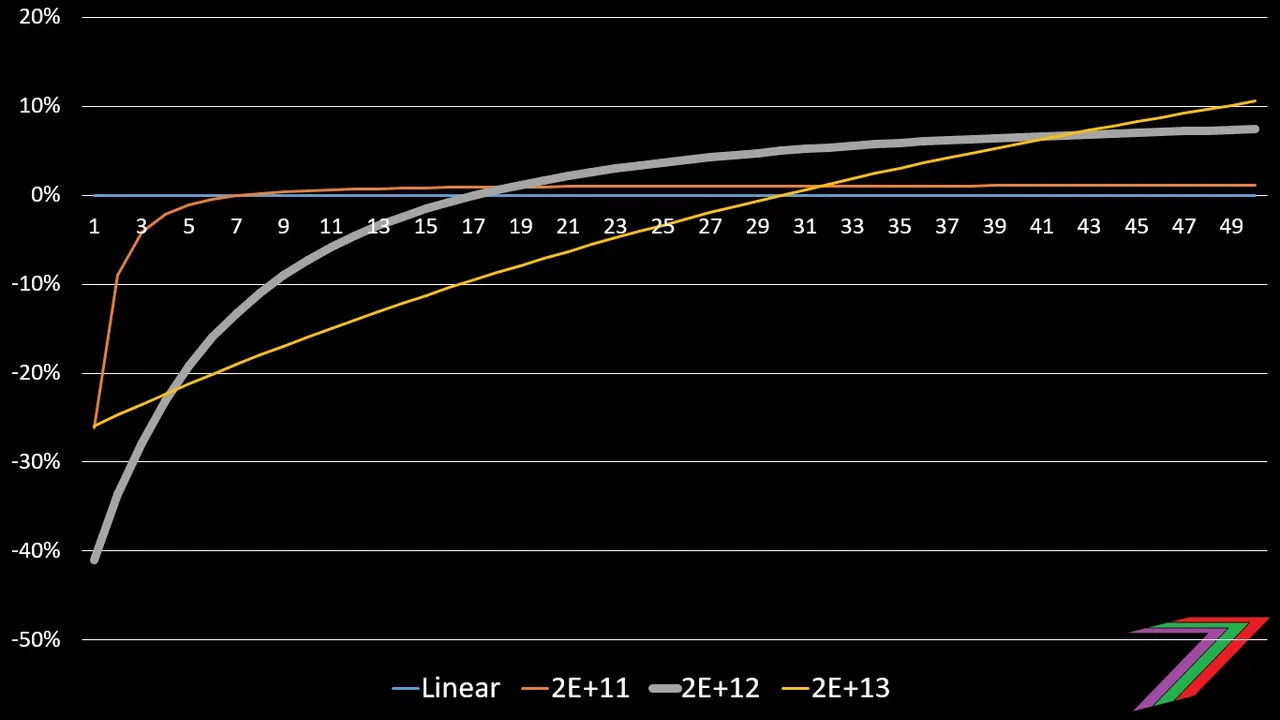
Note 1: Y-axis is the percentage change and the x-axis is payout in Steem
Figure 1 displays the same information as the graph shown by Steemit Inc. in their post ‘Steemit Update: HF21 Testnet, SPS, EIP, Rewards API, SMTs!’. Figure 1 uses a linear x-axis to compare the percentage difference in vote values at different payout values.
I have Included another graph in Figure 2, which compares the value of upvotes at various payouts for the 2e12 rewards curve with a Sigmoid type curve (N/(1+EXP^(-N×C))) similar to the one I described at the beginning of this post.
Figure 2: Value of upvotes at different payouts (2e12 vs Sigmoid type curve)
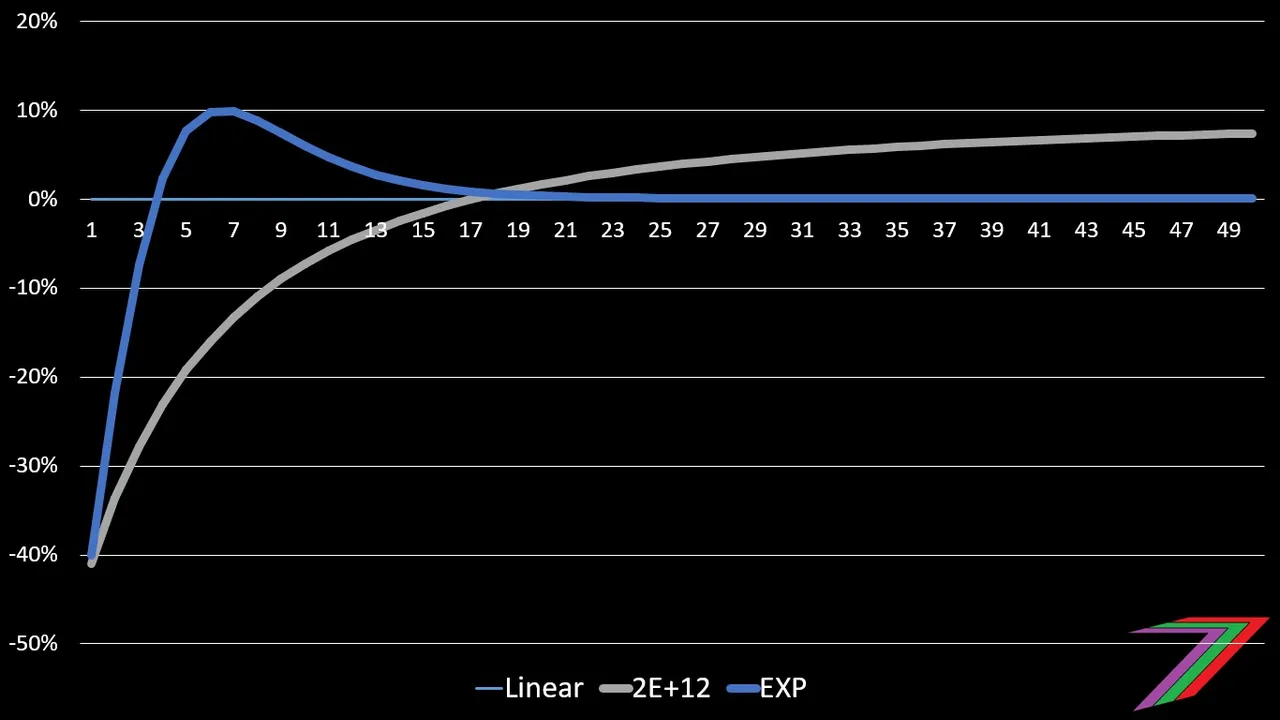
Note: Y-axis is the percentage change and the x-axis is payout in Steem
The upvotes on the Sigmoid curve take an initial jump before returning to the linear value. The 2e12 curve reaches the linear value at around 16 Steem and then continues to Increase but at a decreasing rate.
The effect the 2e12 reward curve has on post payouts (Percentage values)
The graphs I have presented so far, compares the payout when the value of votes for each reward curve exceeds the linear vote payout. This might not be the most useful information to many users. Users might be more interested in the difference in total payout between the different curves. Figure 3 compares the payouts in Steem for the three Steemit Inc. curves to the linear curve.
Figure 3: Payouts of different rewards curves (percentage change)
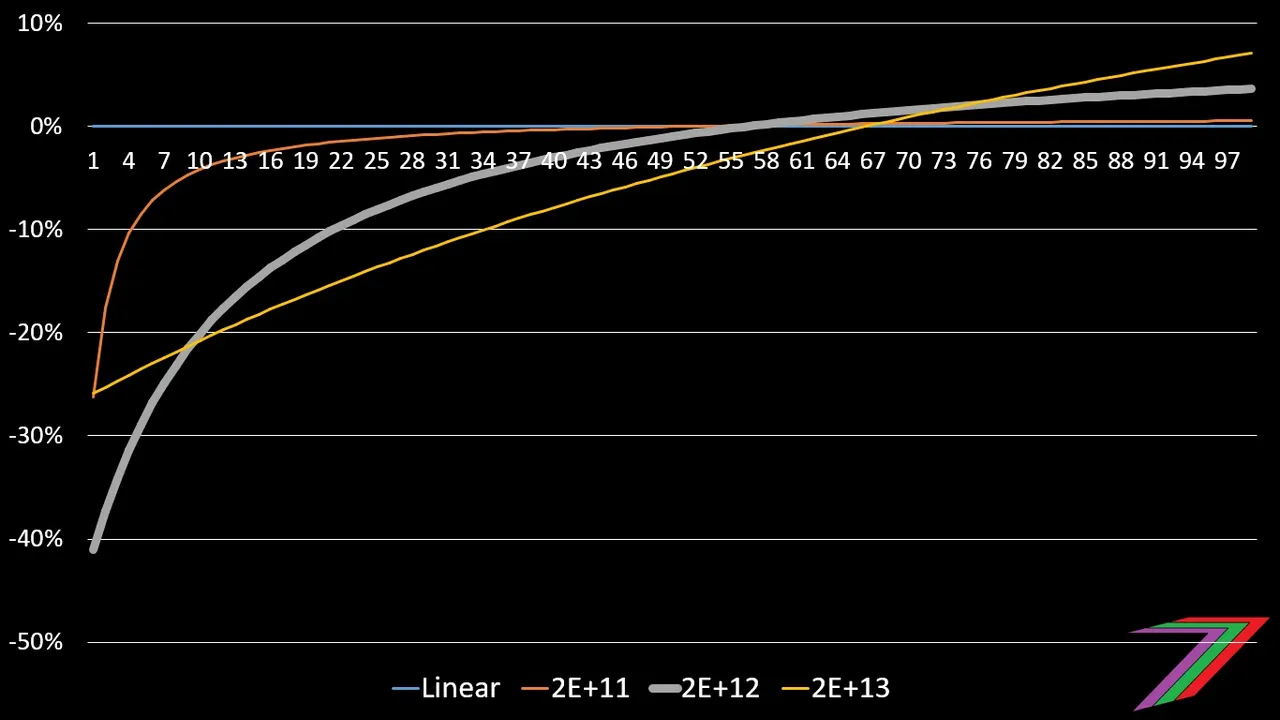
Note: Y-axis is the percentage change and the x-axis is payout in Steem
For the 2e12 curve, posts with payouts lower than approximately 54 Steem (approximately 21.60 STU @ Steem price of US$0.40) with the linear curve will be lower with the 2e12 curve. Posts with payouts lower than approximately 5 Steem with the linear curve will be more than 30% lower with the 2e12 curve.
I would also like to make a quick comparison between the 2e12 curve and two different Sigmoid curves ((PS/(1+EXP^(-PS×0.4)) and (PS/(1+EXP^(-PS×0.1))). See Figure 4 below.
Figure 4: Payouts of 2e12 and Sigmoid curves
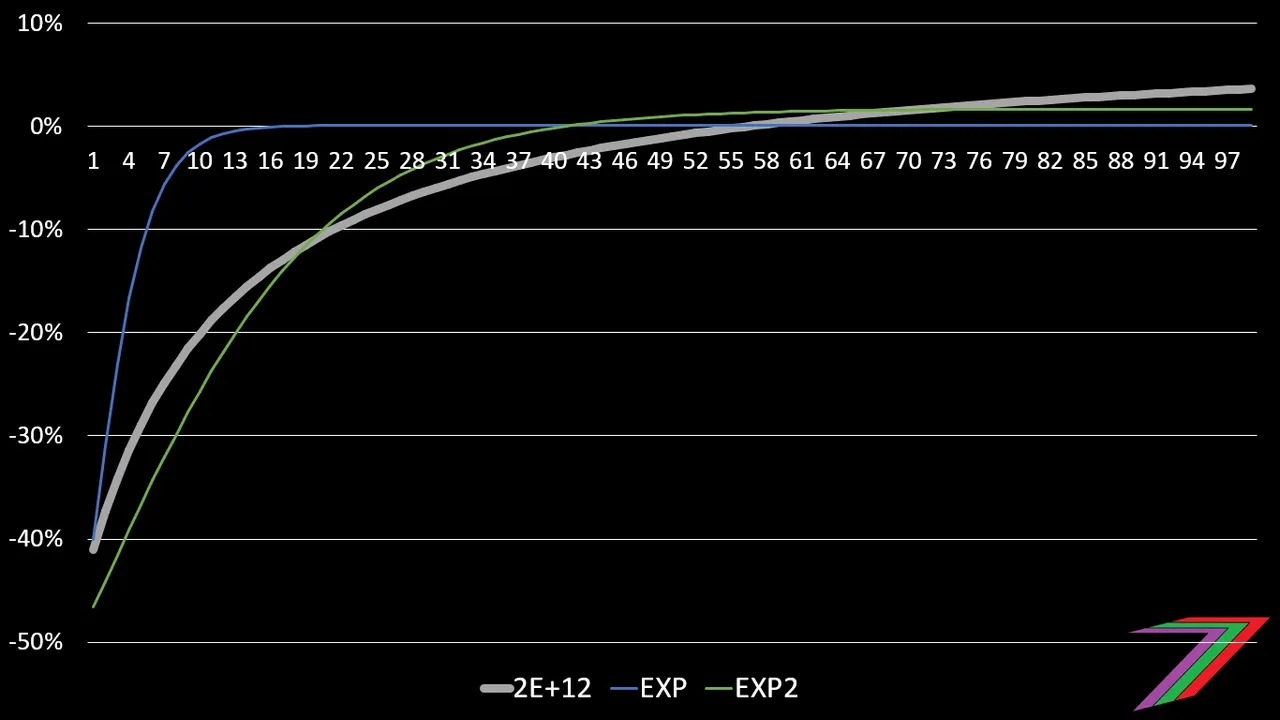
Note: Y-axis is the percentage change and the x-axis is payout in Steem
With the Sigmoid curves, the payouts climb faster and then become linear. The posts with highest payouts and lowest payouts post receive lower payouts than what they would with the 2e12 curve. The posts with payouts between 20 Steem and 60 Steem on the linear rewards curve would receive reward higher payouts with the Sigmoid curve (PS/(1+EXP^(-PS×0.1))).
The effect the 2e12 reward curve has on post payouts (Steem values)
We can also compare the rewards from each curve in terms of actual Steem Payout. Figure 5 compares the three Steemit Inc. curves to a linear curve.
Figure 5: Comparison of Steem payouts
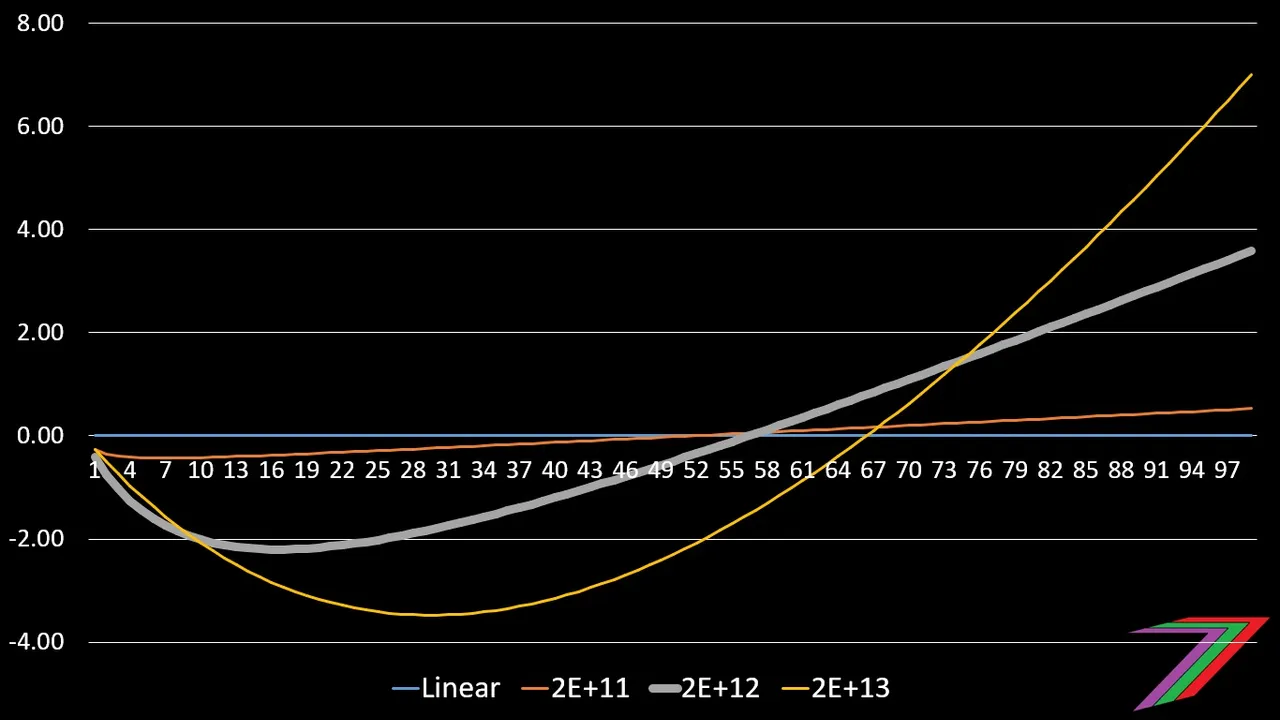
Note: Y-axis is the difference in payout in Steem and the x-axis is payout in Steem
For the 2e12 curve, payouts are not significantly lower. The largest difference is when rewards on the linear curve are 16 Steem. Therefore, the rewards on the 2e12 curve will be approximately 13.80 Steem. This difference is small compared to the 2e13 curve.
The N^2 curve would produce vastly different results. I have made this comparison in Figure 6.
Figure 6: Payouts 2e12 vs N^2
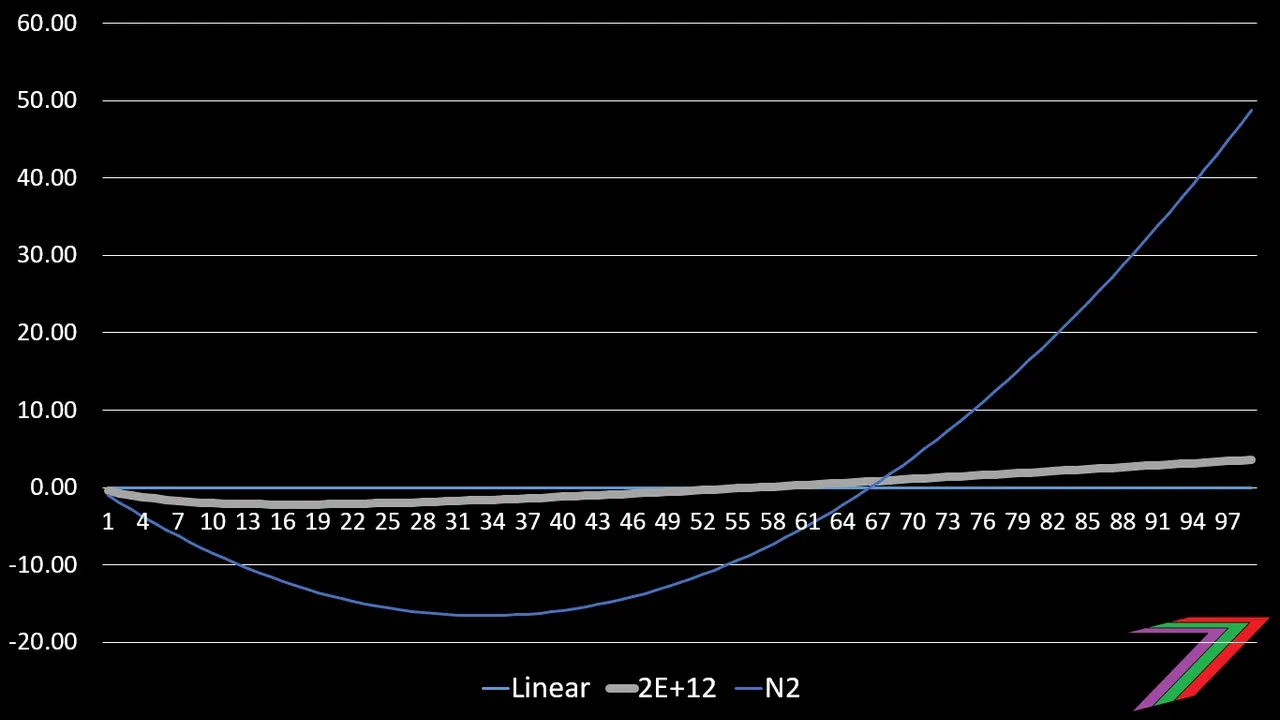
Note: Y-axis is the difference in payout in Steem and the x-axis is payout in Steem
For the N^2 curve, posts with less than approximately 67 Steem on the linear curve would produce lower payouts. For example, a post that would return a payout of 27 Steem with the linear rewards curve would only return a payout of 11 Steem with the N^2 curve. Whereas, using the 2e12 curve, the same post would return a payout of 25 Steem. Posts that would return a payout of 100 Steem on the linear curve could return a payout as high as 150 Steem with the N^2 curve.
Reducing N^2 to approximately N^1.1 would produce a similar shape rewards curve as 2e12. I have made the comparison in Figure 7.
Figure 7: Payouts 2e12 vs N^1.1
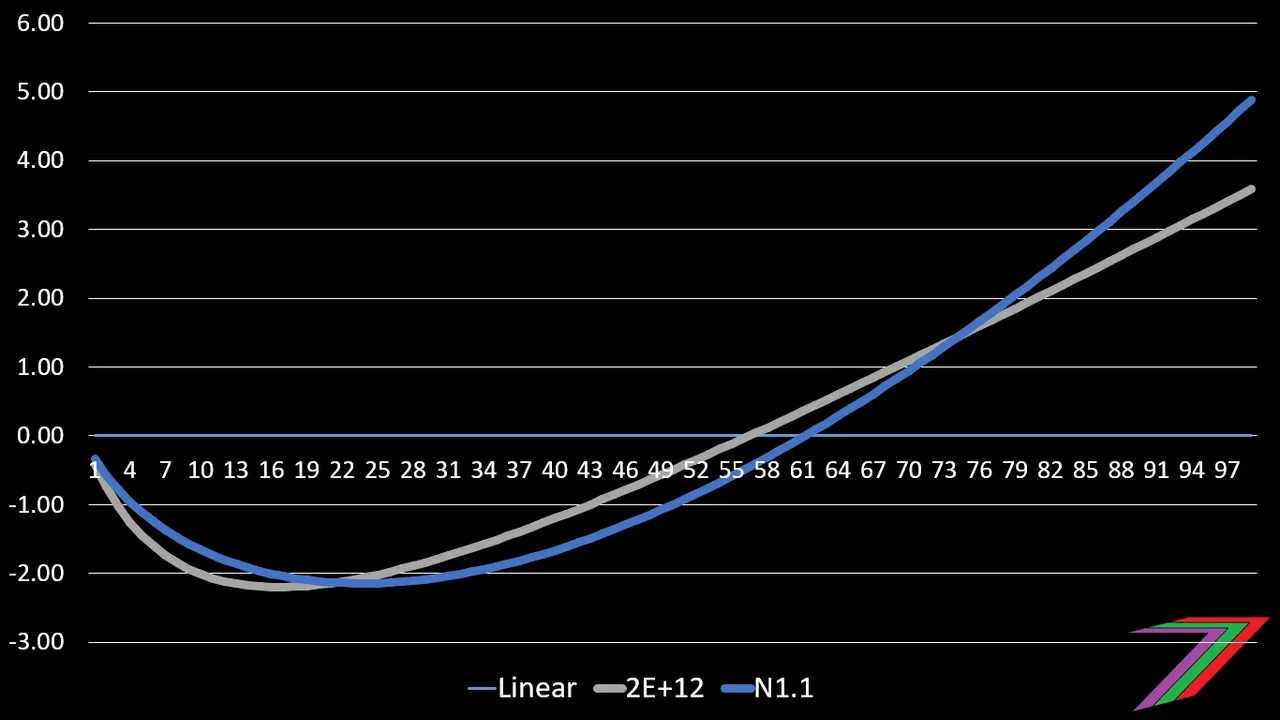
Note: Y-axis is the difference in payout in Steem and the x-axis is payout in Steem
The N^1.1 curve has a less convergent effect than the 2e12 curve. For example, if a post returns a payout of 300 Steem with a linear reward curve, it would return a payout of 350 Steem with the N^1.1 curve but only 322 Steem with the 2e12 curve.
Verdict of the 2e12 curve
The 2e12 curve does not create the effect of heavily skewing rewards to the posts with the highest payouts (most reward shares). The 2e12 does not have a convergent to linear effect like a Sigmoid curve, which reverts to the linear reward curve after a particular payout. The 2e12 rewards still diverge from linear but at a decreasing rate. Even a post with a payout of 300 Steem would only receive a payout of approximately 322 Steem.
As like any of the non-linear rewards curves, the 2e12 curve quite heavily penalises posts and comments with lower rewards. Comments in particular will struggle as they typically have very low payouts.
One of my initial concerns, when I heard about the 2312 curve, was that users would need to buy votes to get their posts on the apparently linear portion of the rewards curve. This is unlikely to occur as the difference between linear rewards and 2e12 curve rewards is at its greatest at that point on the curve. This is likely to be a problem if a Sigmoid curve is used. However, the 2e12 curve might encourage users to promote their posts to more than 54 Steem (i.e. the point where rewards are greater than if a linear curve is used). To prevent this type of behaviour, users will need to use their downvote mana pool.
The 2e12 curve does not appear to create any serious disadvantages but it also does not appear to have many notable advantages when compared to a linear rewards curve. The 2e12 curve will discourage spam and small-scale vote farming but it will also hurt new users and will disincentivise commenting.
How do you feel about the 2e12 rewards curve? Are there any alternative rewards curves that you would prefer to the 2e12 rewards curve?
More posts

If you want to read any of my other posts, you can click on the links below. These links will lead you to posts containing my collection of works. These posts will be updated frequently.




Steem - The Future of DApps
